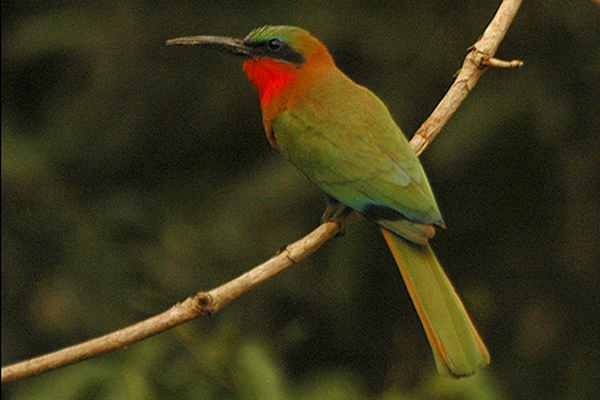Facts About Red-throated bee-eater
The red-throated bee-eater is a vibrant bird species from the Meropidae family, native to tropical Africa. These colorful birds can be observed in countries such as Benin, Burkina Faso, Cameroon, Chad, the Democratic Republic of the Congo, Ethiopia, Gambia, Ghana, Guinea, Guinea-Bissau, Mali, Mauritania, Niger, Nigeria, Senegal, Sierra Leone, Sudan, Togo, and Uganda. Due to its expansive range and substantial population, the International Union for Conservation of Nature (IUCN) has classified this species as "Least Concern" in terms of conservation status.
Adult red-throated bee-eaters typically measure between 20-22 cm in length. They exhibit green upper parts, a striking red chin and throat, and buff-colored hind neck, breast, and underparts. These birds thrive in diverse habitats such as savannahs with scattered trees, farmlands, marsh edges, bushy pastures, and gardens. They are particularly fond of nesting near erosion gullies, streams, and small rivers.
Red-throated bee-eaters are social creatures, nesting in colonies and remaining in their nesting areas year-round. They excavate nest tunnels just before the ground hardens after the rainy season, with some colonies containing up to fifty nests. Their diet primarily comprises honey bees, stingless bees, and other insects. When foraging, these birds often move in pairs or small groups, and it is common to see them perched in a row side by side.

 Togo
Togo